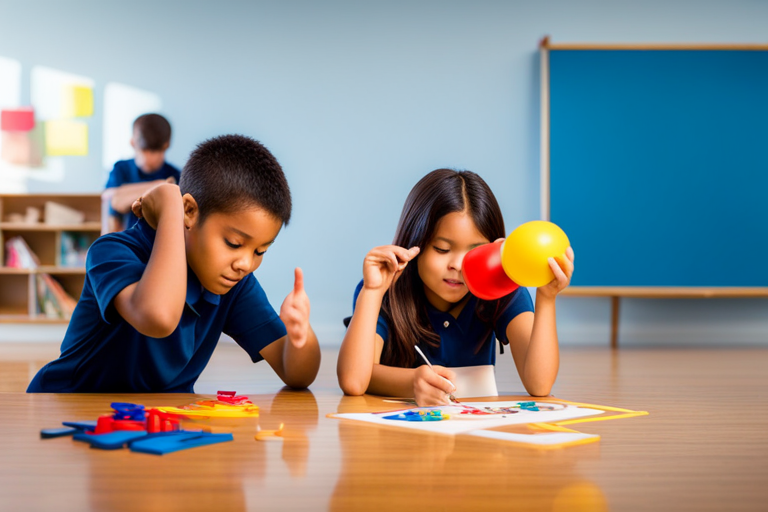Preparing for college is an essential step for high school students, but without a roadmap, it can be difficult to know where to start. One common challenge that many students face is figuring out which courses to take that will help them excel in college. Fortunately, there are ways to navigate this process effectively, such as taking advanced placement, honors, dual enrollment courses. In this blog post, we'll explore what courses high school students should take to prepare for college, how they can participate in extracurricular activities, and why it's crucial for their success. We'll also examine the significance of these courses and how they can help students become better equipped academically, emotionally, and socially for the transition to college.
High school students may struggle to prepare for college due to a lack of knowledge about which courses they should take
High school students may struggle to prepare for college due to a lack of knowledge about which courses they should take, a situation that can leave them feeling overwhelmed and unprepared for the academic rigor of higher education. This problem is exacerbated by the fact that many high schools do not have effective counseling programs that can guide students in selecting the right courses to meet their academic and career goals.
The consequences of students taking the wrong courses in high school can be significant. They may find themselves lacking the necessary skills and knowledge to keep up with college-level coursework, which can result in poor grades and a lower chance of success. There is also the risk of having to spend more time and money remedying weaknesses in basic subjects like math and English. In some cases, students may even drop out of college due to a lack of preparedness.
Fortunately, there are effective strategies that students can use to prepare for college. Advanced placement, honors, and dual enrollment courses are all excellent ways to challenge oneself academically and gain valuable experience in college-level work. Students can also participate in extracurricular activities to build their college resume and demonstrate their leadership, teamwork, and other relevant skills.
High schools can also do more to help students prepare for college by providing better guidance and support. Counselors can help students create a personalized academic plan that aligns with their goals and interests, identify college-level courses that are available at their school, and connect them with resources like online tutorials and tutoring programs.
The lack of knowledge about which courses to take when preparing for college is a common problem faced by many high school students. However, it is not an insurmountable obstacle. By taking advanced courses, participating in extracurricular activities, and seeking out guidance and support from counselors, students can ensure that they are academically prepared for the challenges of higher education.
Taking advanced placement, honors, and dual enrollment courses are effective ways to ensure students are academically ready for college, as well as participating in extracurricular activities to build their college resume
One of the biggest challenges for high school students when it comes to college preparation is determining which courses they should take in order to be academically ready for college. With so many options available, it can be overwhelming to decide between advanced placement, honors, and dual enrollment courses, especially when you couple that decision with the need to build an impressive college resume through extracurricular activities.
The good news is that there are steps students can take to make these decisions easier and ensure they're on the right track for college success. For instance, working closely with guidance counselors can help students understand the expectations of colleges and universities and map out a path toward meeting those expectations through their course selections.
In addition, it's important for students to take a close look at their own goals and interests when considering which courses to take. Do they want to pursue a specific major or career path? If so, they may want to prioritize courses related to those fields whenever possible.
At the same time, students should also be strategic in their extracurricular activities, seeking out opportunities that align with their goals and that will help them stand out to prospective colleges and future employers. This may mean participating in clubs or organizations related to their intended major, volunteering in their community, or taking on leadership roles within their school.
It is ultimately about finding a balance between academic rigor and personal growth that will make you successful in high school and beyond. By taking the time to carefully consider their options and seek out guidance as needed, students can set themselves up for success both in college and in their future careers.
By taking college-level courses and participating in extracurricular activities, students can increase their GPA and become better prepared for college academically, emotionally, and socially
Taking college-level courses and participating in extracurricular activities are two great ways for high school students to get ahead and increase their GPA, while also becoming better prepared for college in a variety of ways. Not only will these activities help students achieve better grades in their current classes, but they will also help them develop important skills and experiences that will serve them well in college and beyond.
One of the main benefits of taking college-level courses is that they are typically more challenging than regular high school courses, and they require more effort and dedication on the part of the student. This means that students who take these courses will be more prepared for the rigors of college-level coursework, which will help them succeed both academically and professionally.
Another benefit of taking college-level courses is that they can often be used to earn college credit, which can help students save money and time when they eventually enroll in college. For example, many colleges will accept Advanced Placement (AP) courses in lieu of introductory courses, which means that students who have taken AP courses in high school can skip these classes in college and move on to more advanced coursework.
Participating in extracurricular activities is also a great way for high school students to become better prepared for college. Extracurricular activities can teach students important skills like leadership, teamwork, and time management, which will be essential for success in college and beyond. Additionally, participating in extracurricular activities can be a great way to make new friends and build a strong social network, which can be invaluable when transitioning to college.
Some key factors to consider when participating in these activities are time management, consistency, and effort. Students must be able to manage their time efficiently so that they can balance their academics, extracurricular activities, and personal life. Consistency in effort is also crucial because it ensures students are giving enough attention to all different aspects of their life. Lastly, the effort put into these activities should be genuine, as it will translate to success both in high school and future endeavors.
Students can gain a great deal from taking college-level courses and participating in extracurricular activities while they are in high school. These activities not only improve grades and academic preparation but also teach valuable skills and experiences, making it an excellent step towards a successful college career.
Conclusion
The right courses to take in high school are crucial for students who intend to attend college. Without a clear understanding of which classes to enroll in, it can be difficult for students to succeed in college courses. However, by taking advanced placement, honors, and dual enrollment courses, students can increase their chances of success. Additionally, participating in extracurricular activities can help students build their college resumes and prepare them emotionally and socially for the college experience. By taking these steps, high school students can lay a strong foundation for their future college careers. So, if you are a high school student wondering what courses to take, remember that taking college-level courses and participating in extracurricular activities can make all the difference in becoming better prepared for college.






